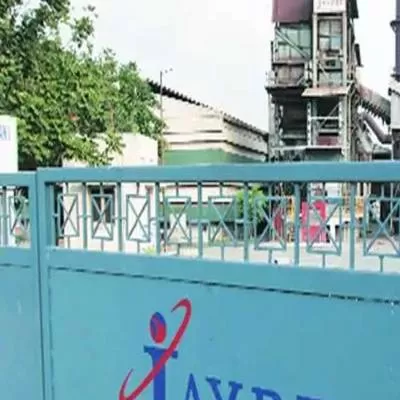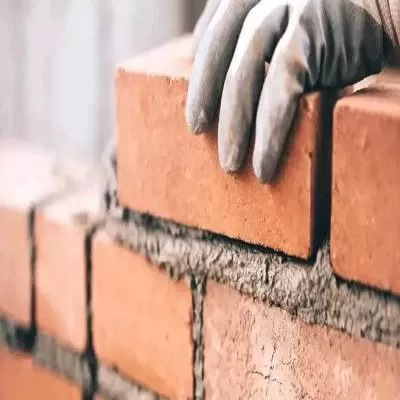- Home
- Building Material
- Cement
- Brick by Brick
Brick by Brick
The construction industry is a major contributor towards India´s GDP, both directly and indirectly. Providing employment to 33 million people, the sector has strong linkages to various other industries such as cement, steel, technology, skill-enhancement, etc.
Township housing and infrastructure will also become major drivers for the construction sector in the near future, with a strong impetus from the government. The infrastructure sector is a key driver for the Indian economy. It has received a special focus from the government with various policies that it has initiated to give a boost to the sector and provide the country with world-class infrastructure.
According to industry data, increasing investments in residential construction and transport infrastructure will drive growth in India´s construction industry over the forecast period (2016-2020). Infrastructure construction is expected to be the industry´s fastest-growing market over this period, with a CAGR of 9.94 per cent in nominal terms, to reach Rs 9.5 trillion ($140.1 billion) in 2020.
Various factors like increasing industrialisation, urbanisation, rising disposable income and population growth have led to a rise in demand for construction services. The sector got a major push with increased government efforts to improve India´s residential and transport infrastructure, which are integral to growth.
The government´s ´Housing for All by 2022´ and the Smart Cities initiatives have turned out to be a major game-changer for the industry. The increased impetus to the creation of affordable housing, along with quicker approvals and other supportive policy changes, has led to a spurt in construction activity in the country.
Residential construction is expected to remain relatively sizeable over the next five years, with a 30.6 per cent share of the industry´s total value in 2020. It is anticipated to be the industry´s fastest-growing market, with the key drivers being public and private sector investments in public transport infrastructure.
The relaxation in norms for FDI in real estate and construction development has resulted in positive sentiments for the construction sector. The introduction of GST will further ease tax-related complexities in the construction sector, while leading to increased activity and growth. There has been a resurgence with regards to FDI inflows into India, and its source can be traced to both domestic pull factors as well as global push factors. In recent times, India has emerged as one of the fastest-growing Asian economies, while China´s growth has seen a decline.
Shining coat
The paint industry in India contributes significantly towards development and improving the living standards of people by making available products of high technology and quality.
The Indian paint industry has moved forward from a predominant decorative paint market to a more diversified market with seasonal fluctuations. The paint industry today, uses innovative technology which has become a major growth driver, against a backdrop of ever-changing customer preferences.
The market for paints in India is expected to grow at a CAGR of around 14 per cent during 2015-16 to 2019-20. There is a wide range of products available in the decorative paints segment in the market today. This segment is expected to witness higher growth, thanks to the government´s focus and incentives to the housing sector. The decorative paint market, which accounts for over 70 per cent of the overall paint market in India, has a large chunk of the demand coming from household painting, architectural marvels, etc.
Though the decorative paint segment has been the main revenue driver, it´s the changing customer preferences that are driving companies to use innovation to cater to the demand. I personally believe that innovation is the mantra to succeed and survive in the current landscape.
Paint companies have now come up with decorative paints to cater to the unique and customised preferences of their customers, like texture and enamel paints, or waterproofing solutions, which serve the purpose of providing a solution to all home-surface problems like wall care, maintenance and industrial solutions. Also, there are paints which contain low Volatile Organic Compounds (VOC), which will not have an adverse impact on the customer´s health. These paints, apart from keeping the walls shining, come with stain-resistant properties.
Keeping in mind the health hazard to the consumers, companies have launched paints which release VOCs, which are a class of carbon-based chemicals, and have the capacity to evaporate readily at room temperature. They have a much lesser level of dangerous chemicals and heavy metals (such as formaldehyde, benzene, toluene, biocides, and cadmium), but are high performance and superior quality paints. Going forward, it would be important to build momentum and give priority to infrastructure in the country. This will help to create more demand for different types of paints. And, to achieve their objectives, companies will have to ensure that they are the preferred solution provider for both home and industrial paint needs.
About the author:
Ranjit Singh, President, British Paints, was instrumental in expanding the footprints of the brand across the country. He has proven expertise in strategy, competitive analysis, business developments, management and operations.
Infrastructure development is expected to be the construction industry´s fastest-growing market, reaching a size of $140.1 billion by 2020, says RANJIT SINGH. The construction industry is a major contributor towards India´s GDP, both directly and indirectly. Providing employment to 33 million people, the sector has strong linkages to various other industries such as cement, steel, technology, skill-enhancement, etc. Township housing and infrastructure will also become major drivers for the construction sector in the near future, with a strong impetus from the government. The infrastructure sector is a key driver for the Indian economy. It has received a special focus from the government with various policies that it has initiated to give a boost to the sector and provide the country with world-class infrastructure. According to industry data, increasing investments in residential construction and transport infrastructure will drive growth in India´s construction industry over the forecast period (2016-2020). Infrastructure construction is expected to be the industry´s fastest-growing market over this period, with a CAGR of 9.94 per cent in nominal terms, to reach Rs 9.5 trillion ($140.1 billion) in 2020. Various factors like increasing industrialisation, urbanisation, rising disposable income and population growth have led to a rise in demand for construction services. The sector got a major push with increased government efforts to improve India´s residential and transport infrastructure, which are integral to growth. The government´s ´Housing for All by 2022´ and the Smart Cities initiatives have turned out to be a major game-changer for the industry. The increased impetus to the creation of affordable housing, along with quicker approvals and other supportive policy changes, has led to a spurt in construction activity in the country. Residential construction is expected to remain relatively sizeable over the next five years, with a 30.6 per cent share of the industry´s total value in 2020. It is anticipated to be the industry´s fastest-growing market, with the key drivers being public and private sector investments in public transport infrastructure. The relaxation in norms for FDI in real estate and construction development has resulted in positive sentiments for the construction sector. The introduction of GST will further ease tax-related complexities in the construction sector, while leading to increased activity and growth. There has been a resurgence with regards to FDI inflows into India, and its source can be traced to both domestic pull factors as well as global push factors. In recent times, India has emerged as one of the fastest-growing Asian economies, while China´s growth has seen a decline. Shining coat The paint industry in India contributes significantly towards development and improving the living standards of people by making available products of high technology and quality. The Indian paint industry has moved forward from a predominant decorative paint market to a more diversified market with seasonal fluctuations. The paint industry today, uses innovative technology which has become a major growth driver, against a backdrop of ever-changing customer preferences. The market for paints in India is expected to grow at a CAGR of around 14 per cent during 2015-16 to 2019-20. There is a wide range of products available in the decorative paints segment in the market today. This segment is expected to witness higher growth, thanks to the government´s focus and incentives to the housing sector. The decorative paint market, which accounts for over 70 per cent of the overall paint market in India, has a large chunk of the demand coming from household painting, architectural marvels, etc. Though the decorative paint segment has been the main revenue driver, it´s the changing customer preferences that are driving companies to use innovation to cater to the demand. I personally believe that innovation is the mantra to succeed and survive in the current landscape. Paint companies have now come up with decorative paints to cater to the unique and customised preferences of their customers, like texture and enamel paints, or waterproofing solutions, which serve the purpose of providing a solution to all home-surface problems like wall care, maintenance and industrial solutions. Also, there are paints which contain low Volatile Organic Compounds (VOC), which will not have an adverse impact on the customer´s health. These paints, apart from keeping the walls shining, come with stain-resistant properties. Keeping in mind the health hazard to the consumers, companies have launched paints which release VOCs, which are a class of carbon-based chemicals, and have the capacity to evaporate readily at room temperature. They have a much lesser level of dangerous chemicals and heavy metals (such as formaldehyde, benzene, toluene, biocides, and cadmium), but are high performance and superior quality paints. Going forward, it would be important to build momentum and give priority to infrastructure in the country. This will help to create more demand for different types of paints. And, to achieve their objectives, companies will have to ensure that they are the preferred solution provider for both home and industrial paint needs. About the author: Ranjit Singh, President, British Paints, was instrumental in expanding the footprints of the brand across the country. He has proven expertise in strategy, competitive analysis, business developments, management and operations.























